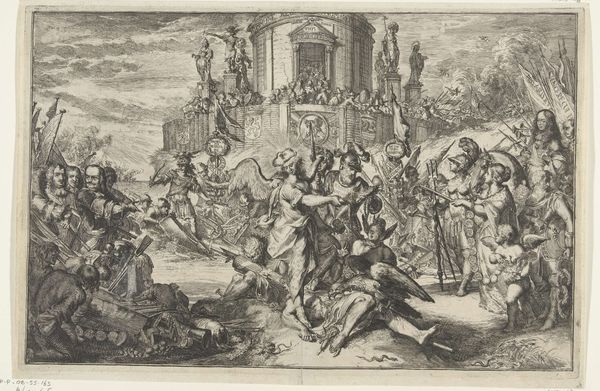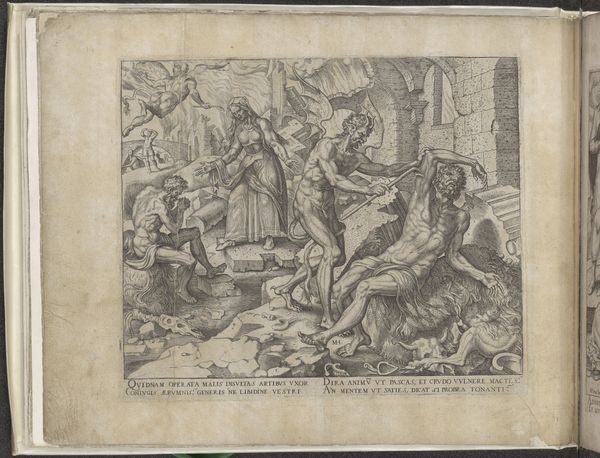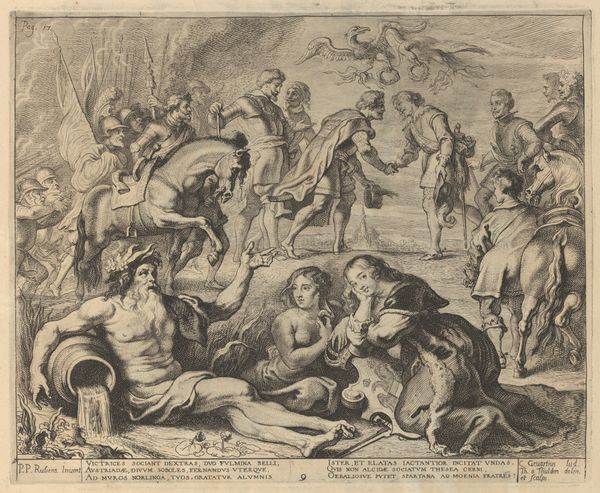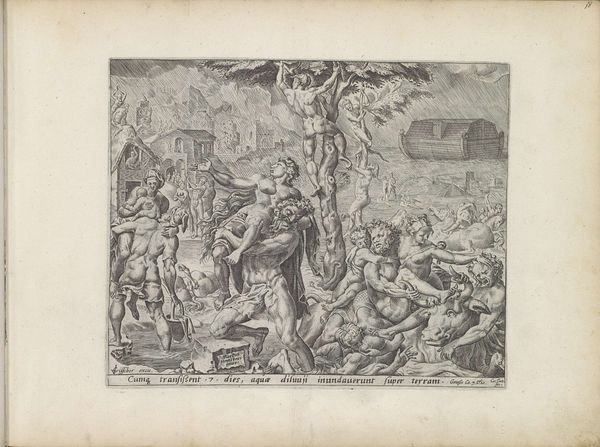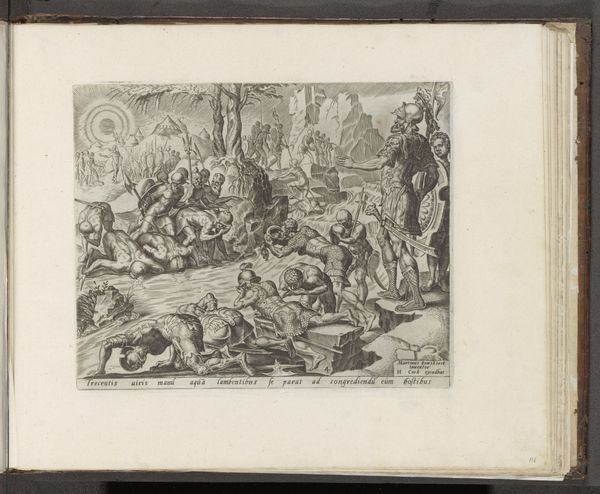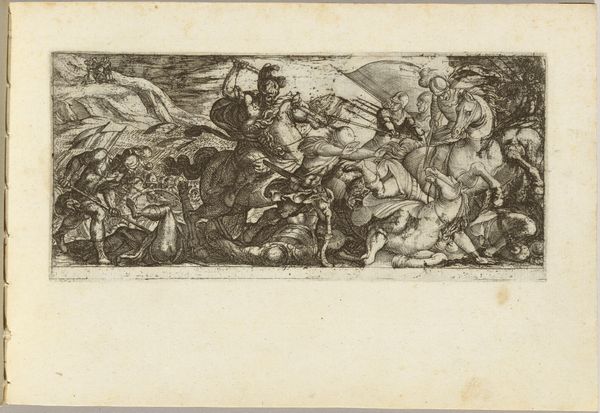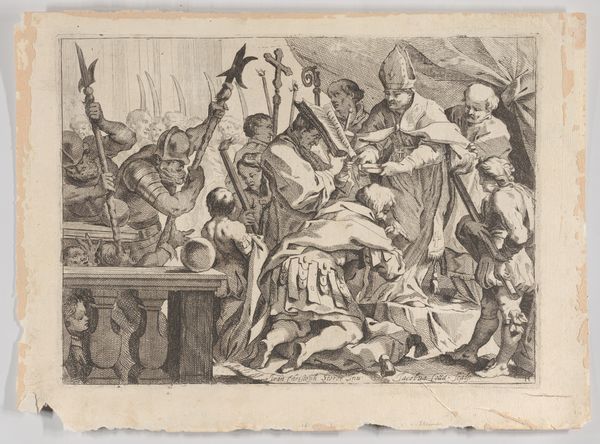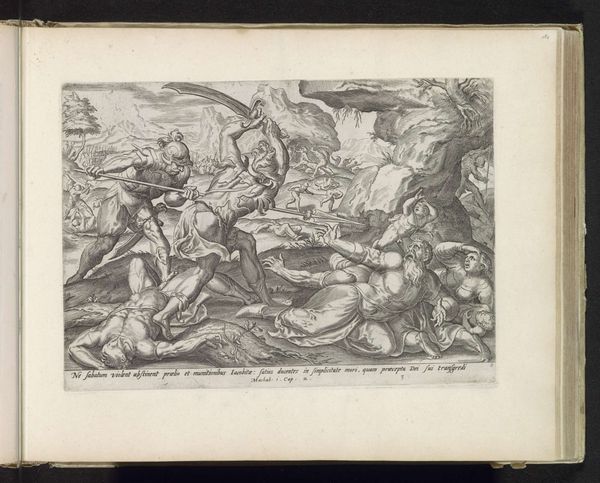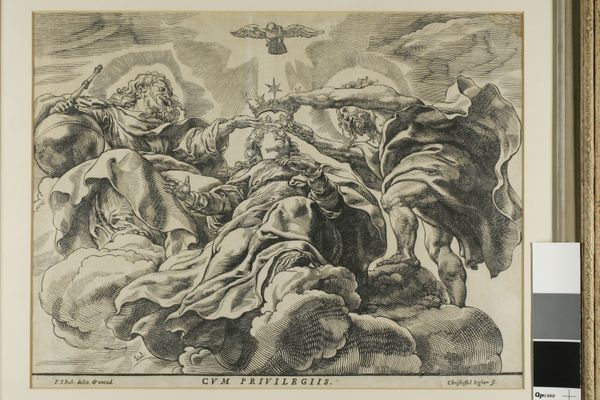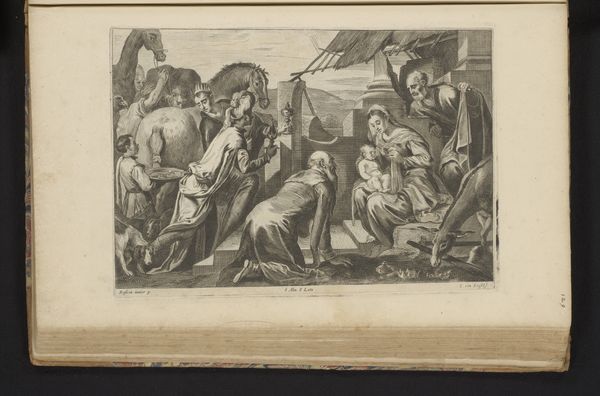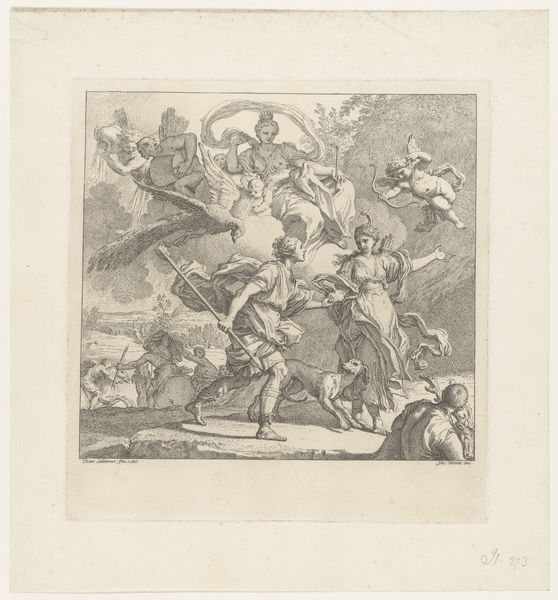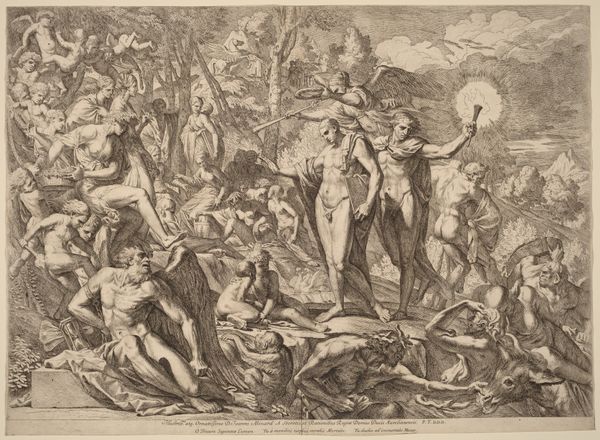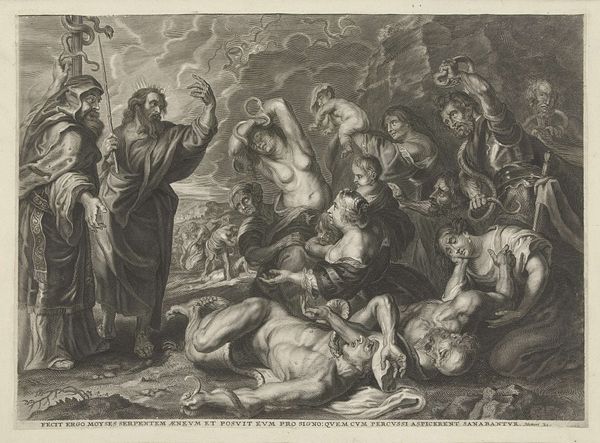
Titelprent voor het eerste deel van 'Engelants schouwtoneel' 1689
0:00
0:00
print, engraving
#
narrative-art
# print
#
figuration
#
pen-ink sketch
#
history-painting
#
engraving
Dimensions: height 153 mm, width 199 mm
Copyright: Rijks Museum: Open Domain
Editor: Here we have Adriaen Schoonebeek's engraving from 1689, the "Titelprent voor het eerste deel van 'Engelants schouwtoneel'". The dramatic scene is immediately captivating, full of violence, figures fighting, and even angels hovering above. What historical narrative do you believe Schoonebeek is trying to convey? Curator: The engraving powerfully depicts the execution of King Charles I. But beyond the immediate narrative, it's crucial to consider how this image functions within the broader sociopolitical context. This image isn't just documenting an event; it’s shaping a historical interpretation, reinforcing ideas about power, justice, and the consequences of tyranny. Consider the placement of Charles – his posture, his gaze, the figures surrounding him – how does this contribute to a particular reading of the event? Editor: Well, his gaze is defiant even in the face of his death, the angels above maybe signal a sense of divine approval or perhaps absolution? Curator: Precisely. And the engraver chose this scene and framing for specific audiences and with distinct political objectives in mind, particularly in relation to contemporary power struggles and political ideologies of the time. Whose voices are amplified in this image, and whose are silenced? How does the portrayal of Charles and the event relate to the societal discourse of legitimate power? Editor: That's a complex layer to unpack. It's about who gets to tell the story, and how it aligns with their own power dynamics. Curator: Absolutely. We can delve even deeper by examining gender and class. Where are the women in this piece, and how does this influence your perception? How would people from various social classes react to it at the time? Editor: This really encourages one to ask what this work means today, and whose story do we amplify by sharing this image now? Thanks for helping contextualize this piece and getting me to think beyond its aesthetic presentation! Curator: The power of images, right? And remember, art is never truly neutral.
Comments
No comments
Be the first to comment and join the conversation on the ultimate creative platform.
